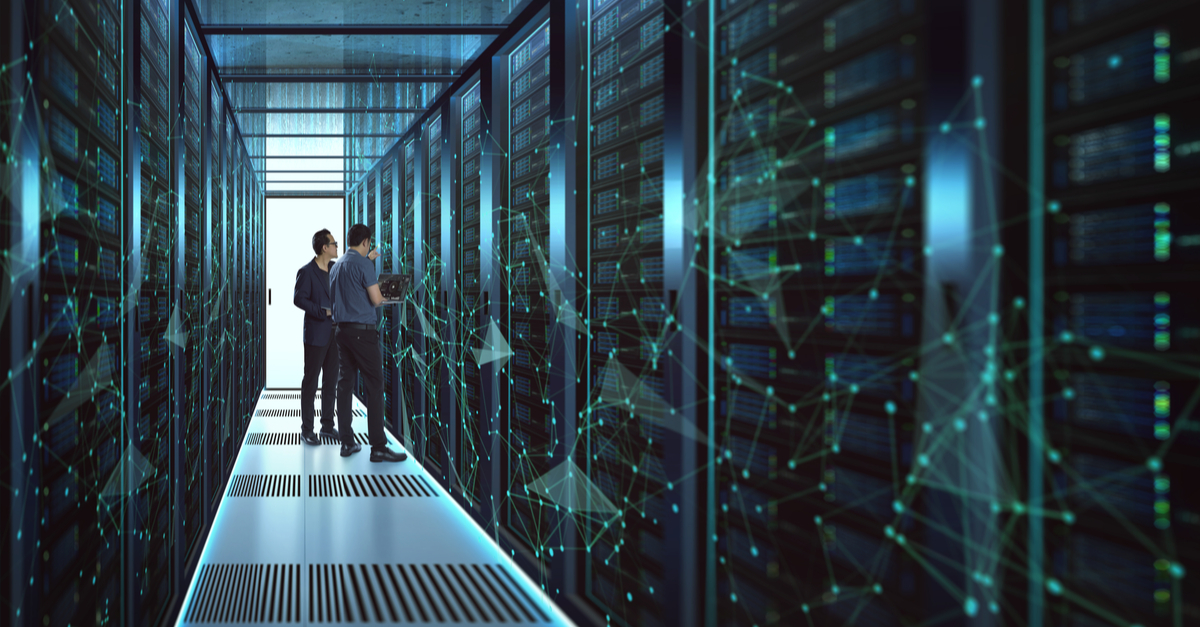
By Jerome Totel, Vice-President Strategy DATA4 Group
The unprecedented health crisis we are facing is prompting companies to rethink their business model and the way they work, and has thus greatly accelerated the adoption of digital. In addition to these challenges, the acceleration of edge computing, artificial intelligence (AI) and as-a-service solutions will continue to drive growth in the data center market and the need for colocation. The digitalisation of our economy requires data centers, bedrocks of the digital world, to continue to innovate to meet the new needs for connectivity, growth, security, innovation and respect for the environment demanded by organisations. They must be modular to offer an ad hoc response to the “as-a-service” business model. They must be eco-responsible to reduce the carbon impact of the digital economy; scalable to keep pace with the many technological breakthroughs in the sector; intelligent in their ability to provide value-added analytics; and resilient to guarantee the availability and security of hosted data and ensure business continuity under all circumstances.
Here are the key upcoming trends in the data center market:
1/ DATA GRAVITY IMPOSES NEW CHALLENGES IN TERMS OF LOCALISATION
The explosive growth of data is more topical than ever. Driven by 5G, IoT and Machine-to-Machine (M2M), and also by the global health crisis, it is changing the way data is stored, managed and transferred. As this volume grows, data and applications are pulled together – as if subject to the law of gravity – and become very complex to move. This is called data gravity. Requiring more and more computing and storage resources, this phenomenon will undoubtedly lead to an increase in data center activities. Companies will address this by bringing their applications closer to data sources and placing hybrid cloud infrastructures in the top destinations of cloud providers, creating a strong demand for colocated data centers in these areas. As a crossroads of the digital world, the data center is a strategic interconnection asset for telecom operators, cloud players and the main Internet exchange nodes.
2/ CUSTOMISED COLOCATION SERVICES TO SUPPORT BUSINESS
Colocation data center operators will continue to innovate to provide their customers with customised solutions to meet the challenges of digital transformation. Because they bring together infrastructure, connectivity and services in a shared and secure structure, they facilitate network interconnections (via very low-latency links), contribute to increased data security, support companies in their regulatory compliance and optimise time-to-market. Aware of these advantages, cloud and hyperscale service providers have long relied on such data centers to rapidly roll out new services. The next step will be to show companies the business and technological value of colocation data centers, particularly in the deployment of hybrid clouds or new network services. It will also be interesting to identify how the data center, and also all of its ecosystems, can support the company in resolving its digital challenges, a key differentiator for 451 Research in its recent study* entitled “2020 Trends in Datacenter Services & Infrastructure?”.
3/ THE DATA CENTER – AT THE CROSSROADS OF DIGITAL SERVICES
The data center is a hub that uses “software-based” technologies to make new network capacities available dynamically and rapidly.
In order to concentrate this network hub, the data center must be composed of significant assets enabling it to accommodate telecom operators and service providers (cloud, SaaS, etc.) and to install their network infrastructures that can be extended in the future:
- Very large duct capacities to connect the public domain with the data centers
- Very large carrier room capacities to allow service operators to set up and meet-me-room capacities to provide interconnections between customers and service providers.
Technical capacities are important requirements for operators to be able to install network solutions. They then use “software” technologies to deliver services dynamically and quickly. And that’s not all: customers can configure their network services themselves using tools and technologies.
4/ EXPLOSION OF EDGE COMPUTING COMPLEMENTED BY MULTI-CLOUD
The exponential mass of data generated by the IoT creates new challenges in terms of storage, processing and analysis within data centers. We are witnessing the rise of edge computing, which ensures the distribution of load calculation as close as possible to the equipment, at the edge of the network, and which guarantees reduced latency and an optimised user experience. The growth of edge computing is also leading to the development of local data centers, which enable the benefits of local data processing to be used securely. Instead of a centralised computing model where data travels to the cloud for processing and back to the end user, a new, more fluid, distributed model is emerging. It is based on a hybrid multi-cloud approach that connects the Edge to data centers, as well as private and public clouds from different vendors to enable real-time analytical processing. Today, the question is no longer whether edge computing is necessary, but whether it is cost-effective. Local data centers may be more expensive than a single server, but deploying a complete infrastructure, including security mechanisms and a turnkey technical package, is still essential to optimise multi-cloud services, with reduced operational costs.
5/ DEVELOPING ECO-RESPONSIBLE DATA CENTERS
Data centers certainly use a significant amount of water and electricity. While the market tends to focus on costs and resilience rather than on the sustainable use of its resources, the environmental impact of these facilities remains a major concern for the vast majority of customers. Data centers must differentiate themselves by innovating around sustainability; for example, by using advanced technologies, renewable energy sources or by accurately assessing environmental impacts when choosing sites. Constructing intelligent buildings or “smart data centers” that combine improved user experience with operational excellence and the optimisation of energy consumption and data center resources is thus essential. In addition, undeniable climate change – warmer outdoor temperatures, increased risk of natural disasters, changes in water availability, and changing customer and regulatory requirements – will affect the market in unprecedented ways. Data center operators will need to plan ahead and actively manage well-developed response plans to deal with all of these changes.
6/ TOWARDS INDUSTRY CONSOLIDATION
Mergers and acquisitions will continue to impact the highly capital-intensive data center market, but they will slow down. As more and more long-term investors come into play – from institutional investors (insurers, pension funds, sovereign wealth funds, etc.) to real estate investment companies and data center providers themselves – the number of data centers available for acquisition is starting to decline. However, the data boom and the evolving digital infrastructure market still represent a long-term investment with high growth potential for companies.
While cloud adoption, IoT development and exponential data growth will continue to drive demand for data centers, the dynamics of this market will increasingly depend on the speed of asset deployment, cost reduction and its ability to differentiate itself. While geographic positioning is a decisive factor, from a technological standpoint, improving energy performance is now more than ever at the heart of the debate.
*451 Research study: 2020 Trends in Datacenter Services & Infrastructure – June 2019

